Electric cars on fire and bathing
Probably not a single discussion on the topic of electric cars and their future can not do without mentioning the argument that electric cars (or rather their batteries), if they burn, they burn like candles.
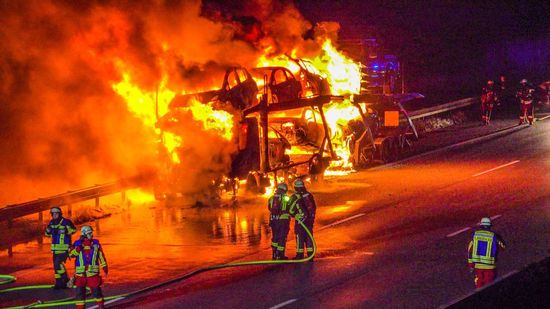
Is this so and how safe are electric cars, let's try to figure it out.
And to begin with, a couple of stories with headlines andexposures of explanations:
Lyrical digression: the article is inspired by the topic of Modern Automotive Engineering. Electric cars - the disruption of the covers of the respected kababok and is its complement / expansion.
Just as it can be considered a detailed response to a comment from Igor_O to another article
Contents
“Spectacular conflagration”, “car carrier with electric cars completely burned out”
German burned out in Tesla. Fire intensified due to the battery?
Burned out in an electric car: the parents of the murdered teenager sued Tesla
Yeah, the pictures and headlines are terrifying (and what else to expect from BILD), but let's figure out how things really are. And first, ask:
And ADAC says that (hereinafter quote, but not verbatim) :
And firefighters say that
But there are additions regarding EV:
For the sake of justice, it should be noted that usually an internal combustion engine-car can catch fire due to a 12V battery mainly when:
But even if this happens, then the usual foam is quite enough to quickly extinguish the fire. (unless of course catch on time). In the case of a lithium battery, one fire engine may not be enough.
PS:
In addition to everything new that brings a growing number of electric vehicles, questions are added from the point of view of rescuers and firefighters:
* But you can create such machines:
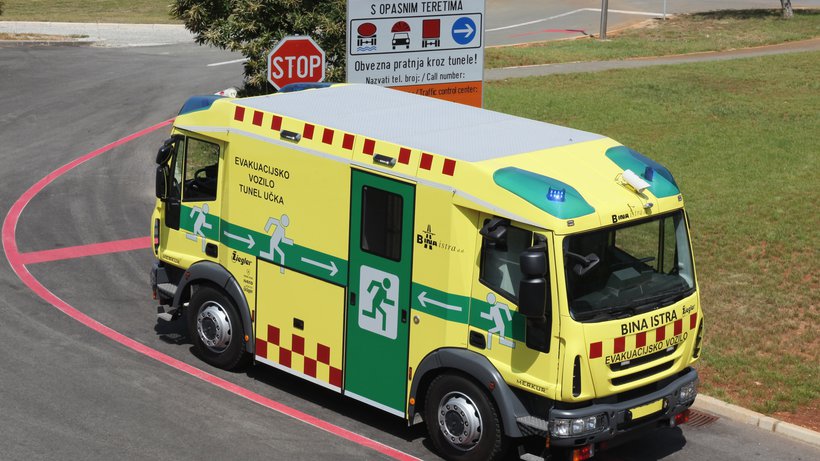
Electric fire truck for tunnels. Croatia @Ziegler
Thank you kababok for writing the article and suggesting a headline.
Returning to the question: are lithium batteries burning and how ?, let me quote
and provide a link to an article Kak exploding lithium-ion batteries from LadyN (really wonderful article)

Is this so and how safe are electric cars, let's try to figure it out.
And to begin with, a couple of stories with headlines and
Lyrical digression: the article is inspired by the topic of Modern Automotive Engineering. Electric cars - the disruption of the covers of the respected kababok and is its complement / expansion.
Just as it can be considered a detailed response to a comment from Igor_O to another article
Contents
- Spectacular conflagration
- What does ADAC say?
- What do the firemen say?
- And that, ICE cars do not burn
- What are the conclusions from all this?
“Spectacular conflagration”, “car carrier with electric cars completely burned out”
Spectacular conflagration
“A 15-meter flame, explosions and thick smoke is a truck with 7 vehicles, including two electric vehicles ...”, “Since it was impossible to quickly put out the batteries of electric vehicles, rescue operations were very difficult ....”, “70 crews put out the fire ”,“ electric cars flared up several times after they were put out .. ”
What happened: the car transporter caught fire due to a damaged tire. The driver saw the smoke behind and managed to pull over to the side of the road. It was already so blazing that he could not put out the fire. There were 7 cars on the transporter, including 2 hybrids. Putting them out was the hardest part. I had to drive fire engines several times to get water, and only after 2 hours they were able to put out the fire. The video shows how the fire breaks out several times after it has been extinguished.
What happened: the car transporter caught fire due to a damaged tire. The driver saw the smoke behind and managed to pull over to the side of the road. It was already so blazing that he could not put out the fire. There were 7 cars on the transporter, including 2 hybrids. Putting them out was the hardest part. I had to drive fire engines several times to get water, and only after 2 hours they were able to put out the fire. The video shows how the fire breaks out several times after it has been extinguished.
German burned out in Tesla. Fire intensified due to the battery?
Picture
What happened: For an unknown reason, the driver lost control and flew into the dividing bars. Tesla rolled over and caught fire. Whether the battery accelerated the fire is not clear. At first, the firemen suspected that they had intensified it, then they removed this comment from Facebook. But judging by the fact that the car lies with its wheels up and how it burns without the help of a battery, it could not do here.

What happened: For an unknown reason, the driver lost control and flew into the dividing bars. Tesla rolled over and caught fire. Whether the battery accelerated the fire is not clear. At first, the firemen suspected that they had intensified it, then they removed this comment from Facebook. But judging by the fact that the car lies with its wheels up and how it burns without the help of a battery, it could not do here.
Burned out in an electric car: the parents of the murdered teenager sued Tesla
Picture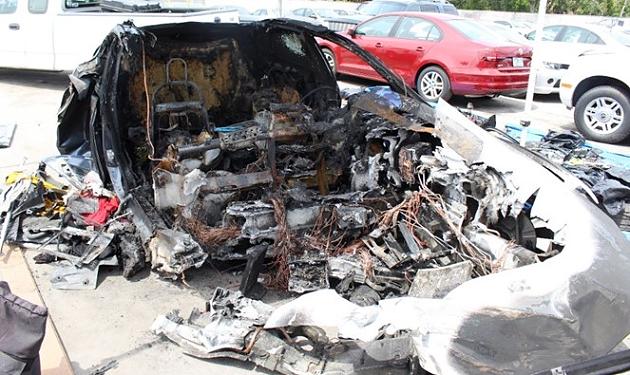
What happened: the driver (18) flew under 140 where it was possible only 40. And overtaking flew into the wall. They write that the car’s lithium-ion battery caught fire twice after firefighters extinguished the fire. Once, when the car was loaded to remove it from the scene, and the second time already in the parking lot.

What happened: the driver (18) flew under 140 where it was possible only 40. And overtaking flew into the wall. They write that the car’s lithium-ion battery caught fire twice after firefighters extinguished the fire. Once, when the car was loaded to remove it from the scene, and the second time already in the parking lot.
Yeah, the pictures and headlines are terrifying (and what else to expect from BILD), but let's figure out how things really are. And first, ask:
What does ADAC say ?
A few words about ADAC, for those who do not know what it is:
ADAC (General German Automobile Club) is the largest European transport club. It consists of 20.178.569 people. The main activity is road assistance, for which 1.856 of their vehicles and about 5000 partner cars, as well as helicopters at 34 air rescue stations (helicopters) serve. In 2017, they assisted more than 4 million times.
They are also called "yellow angels" and the one who has ever been to Europe, could not help but meet them.
In addition, ADAC conducts car tests, trainings on safe driving, crash tests:

I probably will not lie if I say that ADAS is one of the world's largest authorities in matters of car safety.
The Germans were very proud of the ADAC and completely trusted it, until the ADAC was caught on pushing people with new batteries when they could just charge the old one. At the same time, they sold at exorbitant prices. I'm not talking about tax fraud.
After that, ADAC was divided into commercial (insurance, leasing, tourism, etc.) and charitable parts (road assistance, rescue work) activities
They are also called "yellow angels" and the one who has ever been to Europe, could not help but meet them.
In addition, ADAC conducts car tests, trainings on safe driving, crash tests:

I probably will not lie if I say that ADAS is one of the world's largest authorities in matters of car safety.
The Germans were very proud of the ADAC and completely trusted it, until the ADAC was caught on pushing people with new batteries when they could just charge the old one. At the same time, they sold at exorbitant prices. I'm not talking about tax fraud.
After that, ADAC was divided into commercial (insurance, leasing, tourism, etc.) and charitable parts (road assistance, rescue work) activities
And ADAC says that (hereinafter quote, but not verbatim) :
The risk of fire is relatively low, since current electric cars in the event of an accident are as safe as conventional ones, and the high-voltage system usually turns off after an accident when the airbag is deployed.At the end, ADAC notes that
Critical may be the case if the battery protection is damaged as a result of an accident. In this case, the elements in the battery may leak, which may cause the Thermal Runaway: then the battery is very difficult to extinguish.
ADAC compared the VW e-up! With the normal VW up! Which showed that in the crash tests both cars gain 5 stars
I note only that the battery in the VW e-up! Was reinforced with a frame, which naturally gives the necessary rigidity, but also adds about 250 kg of weight, which naturally does not add to the VW e-up!
During side and pole impacts, no dangerous deformations were recorded on the battery case.It should be borne in mind that in crash tests, a side impact is applied by a ram at a speed of 50 km / h, and a pile blow - 34 km / h. About the scale and risk of deformation at higher speeds do not give any information.
Side impact with the help of a ram and piles are of particular importance for modern electric vehicles. Because the space for deformation of the car on the side is less than the back or front, then in this case the side impact is the weak point of the electric car ...
What do the firemen say?
And firefighters say that
A burning battery can only be cooled, cooled, and cooled. For several hours, or maybe days ...In the event of an accident, the approach to electric vehicles does not fundamentally differ from the approach to internal combustion engines, it is necessary:
For several hours, or maybe days ...
For Tesla Model S, this requires up to 11,000 liters of water, (according to the manufacturer
(remark from me - I did not find a link to this data , you have to take the word to the correspondent / fireman.)
Typically, a fire truck carries from 1,500 to 2,000 liters of water, which is enough for the fire brigade to put out a car with an internal combustion engine or a fire in a house.
- Put the system in a safe state.
- Protect the vehicle from rolling away. (whatever that means, it's the complexity of the translation, here's the smiley face)
- Put vehicle systems in a safe condition.
- Turn off the high voltage system.
- Disconnect the 12V system.
- Tools - water, foam, powder.
But there are additions regarding EV:
- Cannot cut HV battery
- Avoid cutting high voltage cables / components
- Foam is preferred for tires and plastic parts
- The preferred extinguishing agent for the HV battery / systems is water. plenty of water
- It is advisable to continue to cool the battery with water even after extinguishing the fire.
- Depending on how much water got on the battery and how it is damaged, self-production of explosive gas (oxyhydrogen) is possible
And what, ICE cars do not burn?
Burn and how. for instance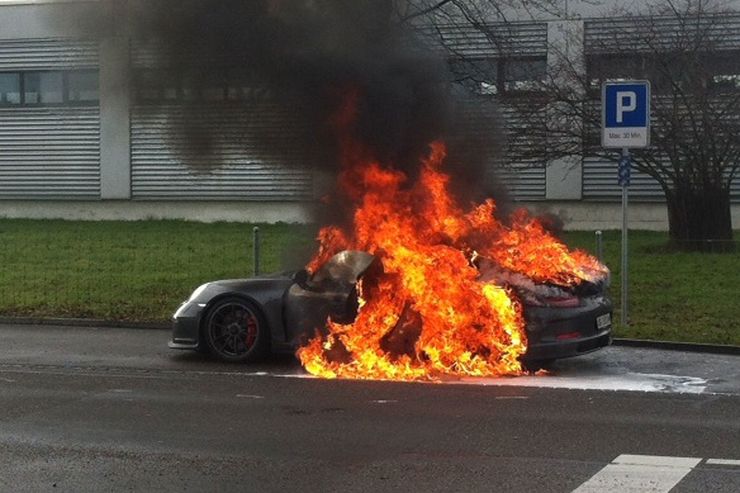
or here's another.
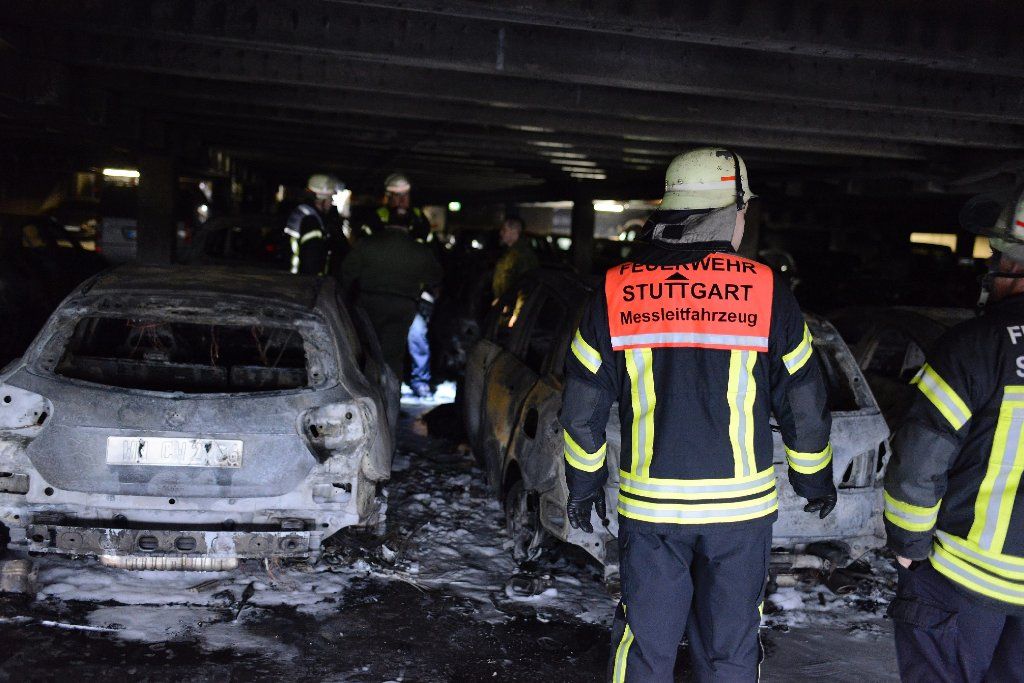 One car caught fire in one parking lot. And in the end, 14 cars burned down. At the same time, when the next morning, the car, which became the source of the fire, was towed, it caught fire again. True, she was instantly extinguished.
One car caught fire in one parking lot. And in the end, 14 cars burned down. At the same time, when the next morning, the car, which became the source of the fire, was towed, it caught fire again. True, she was instantly extinguished.

or here's another.
 One car caught fire in one parking lot. And in the end, 14 cars burned down. At the same time, when the next morning, the car, which became the source of the fire, was towed, it caught fire again. True, she was instantly extinguished.
One car caught fire in one parking lot. And in the end, 14 cars burned down. At the same time, when the next morning, the car, which became the source of the fire, was towed, it caught fire again. True, she was instantly extinguished.For the sake of justice, it should be noted that usually an internal combustion engine-car can catch fire due to a 12V battery mainly when:
- short circuit
- when overheating.
But even if this happens, then the usual foam is quite enough to quickly extinguish the fire. (unless of course catch on time). In the case of a lithium battery, one fire engine may not be enough.
What conclusions can be drawn from all this?
- Do not drive under 140 where the limit is 40.
- Do not fall under the side ram, it’s better in the forehead.
- Try not to overheat the HV battery.
- The main cause of ignition of lithium battery in an accident can be considered its deformation (hello Samsung Note).
- If it lights up, it burns quickly and brightly and burns to the end.
- Water is poured primarily in order to cool the battery (hi Fukushima).
- Well, and most importantly: electric cars are no less safe than conventional ICEs, and due to the design they are sometimes safer than analogues. (Who would doubt that)
PS:
In addition to everything new that brings a growing number of electric vehicles, questions are added from the point of view of rescuers and firefighters:
- how should firefighters be trained?
- what fire engines are needed to extinguish electric vehicles in which case: it should be one or two specials. fires with equipment (large tank, etc.) or for each special. to put funds?
* But you can create such machines:

Electric fire truck for tunnels. Croatia @Ziegler
Thank you kababok for writing the article and suggesting a headline.
Update:
Returning to the question: are lithium batteries burning and how ?, let me quote
So, after a short circuit has occurred, the battery starts to heat up. When the temperature reaches 70-90 ° C, the ion-conducting protective layer on the anode begins to decompose. And then lithium, built into the anode, reacts with an electrolyte, releasing volatile hydrocarbons: ethane, methane, ethylene, etc. But, despite the presence of such an explosive mixture, ignition does not occur, since there is no oxygen in the system yet.
Since the reactions with the electrolyte are exothermic, the temperature and pressure inside the battery continue to rise. When the temperature reaches 180-200 ° C, the cathode material, usually a transition metal oxide with lithium embedded in the crystal, enters a disproportionation reaction and releases oxygen. This is where spontaneous combustion occurs and an even sharper jump in temperature. In parallel, there is a thermal decomposition of the electrolyte (200-300 ° C), which also generates heat.
and provide a link to an article Kak exploding lithium-ion batteries from LadyN (really wonderful article)
